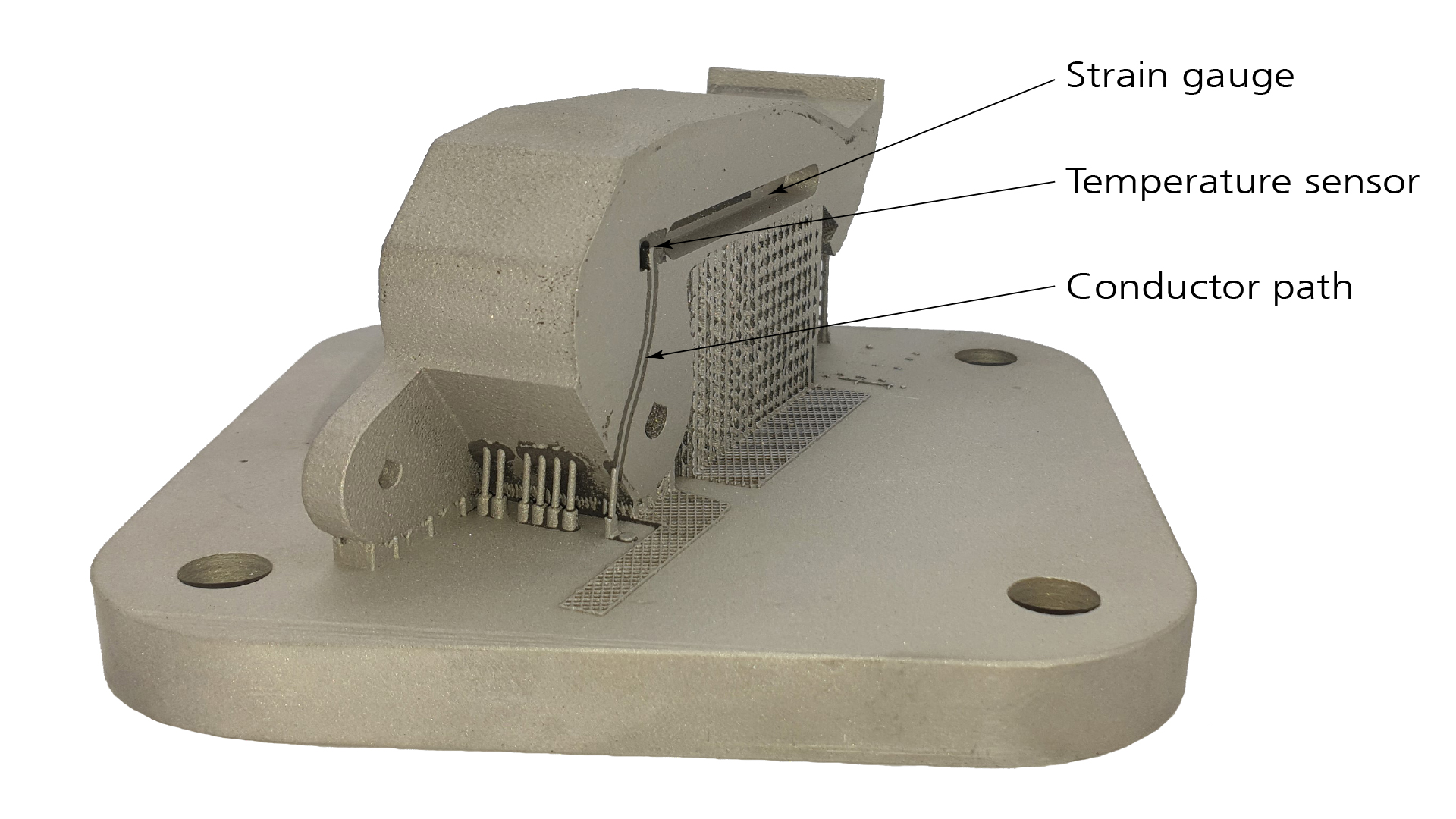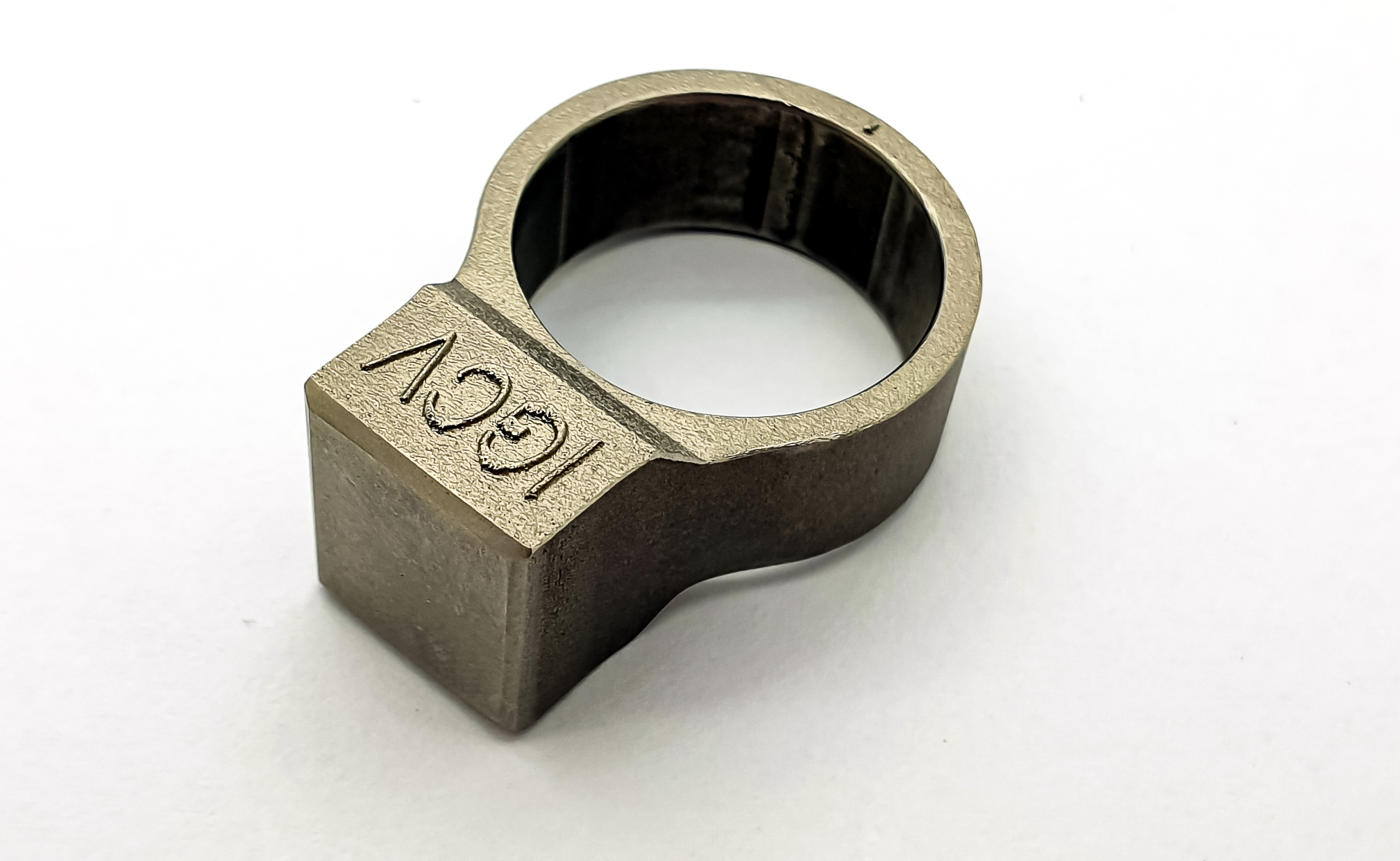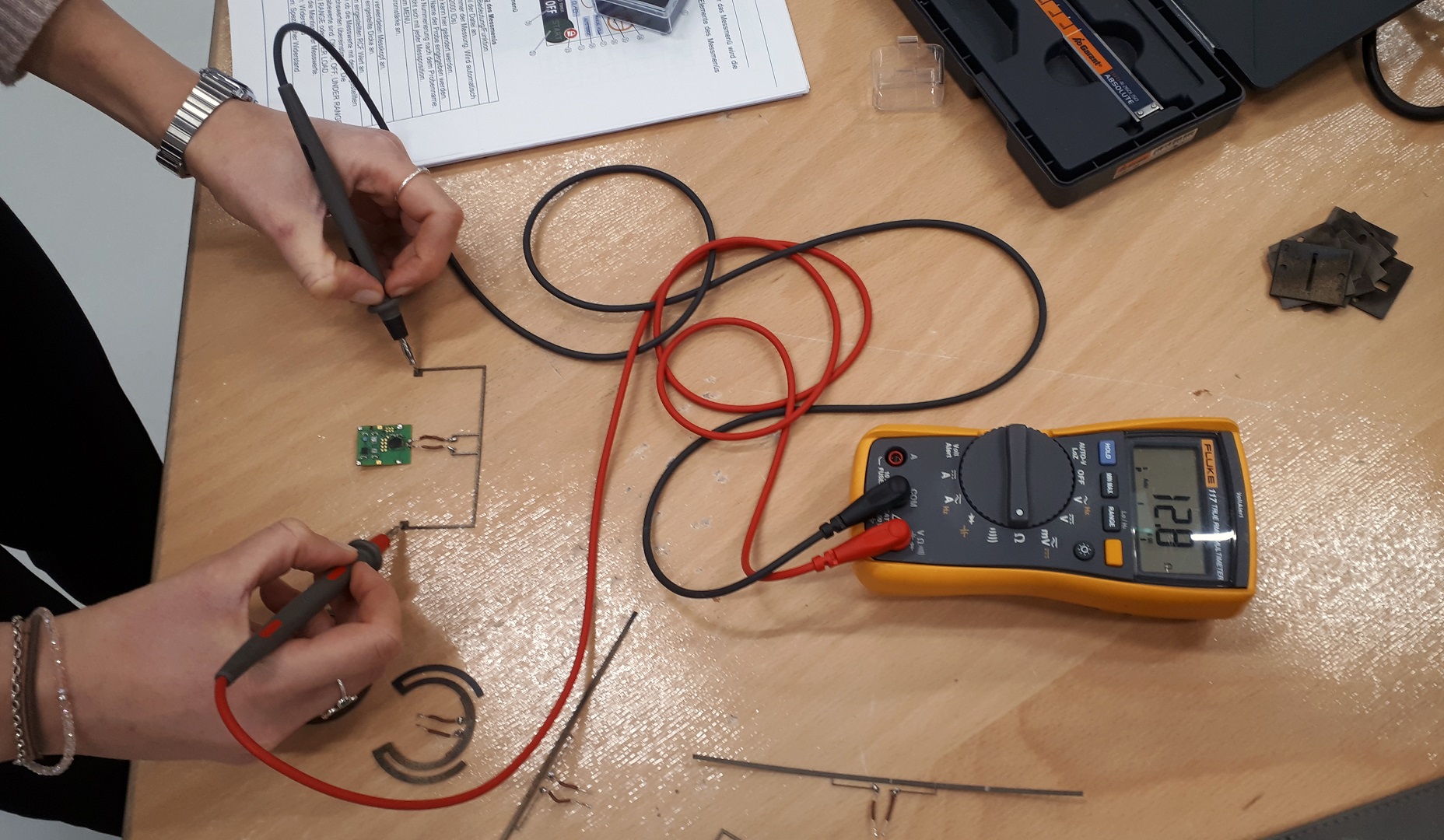According to the current state of the art, an automated handling system was added to a laser beam melting system. This handling system is capable of automatically integrating sensors into a cavity provided in the component when the PBF-LB/M process is interrupted.
In the first step, a powder removal is necessary, followed by the insertion of the sensor into the cavity and finally the fixation of the sensor, as well as a closure of the cavity, to resume the PBF-LB/M process. This process allows the integration of electronics at any point in the component. The integrated sensors are completely shielded from environmental influences, are invisible from the outside, and are integrated without influencing the external component geometry with minimal component weakening. The functional density of a metallic PBF-LB/M component is thus maximized in an automated manufacturing process sequence without the need for post-processing efforts or workforce.
A patent-pending process also makes it possible to flexibly imprint conductive tracks into the metallic component and connect them to the integrated sensors. In this way, sensor data can be transmitted to external systems via these conductive tracks and subsequently evaluated. The project also developed concepts for wirelessly transmitting signals from a cavity completely sealed with metal to the outside using RFID technology (e.g. smart gear wheel in the picture on the right).



